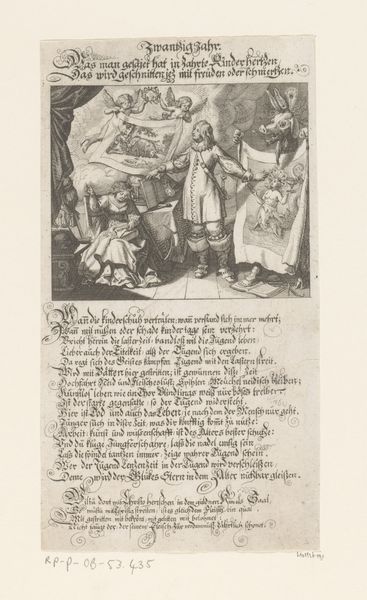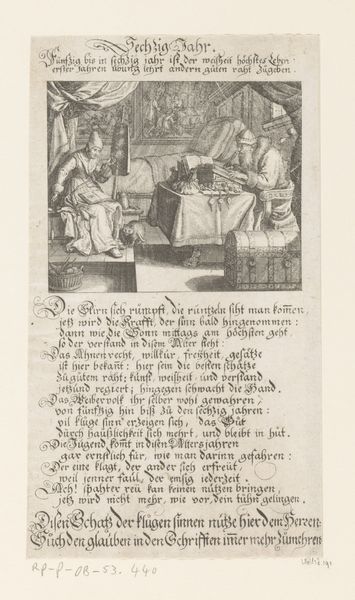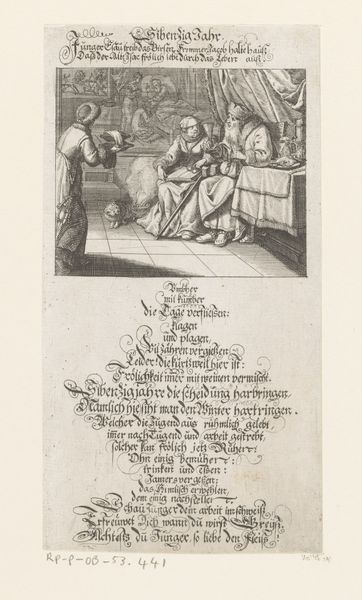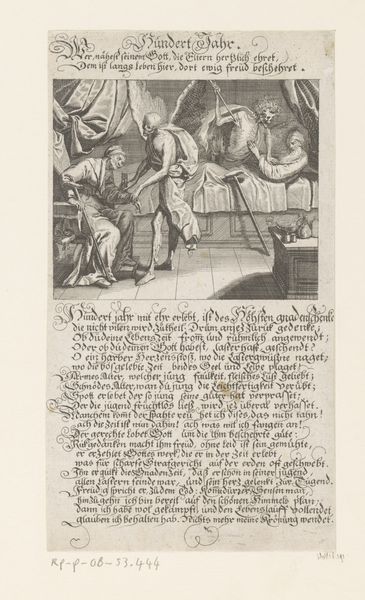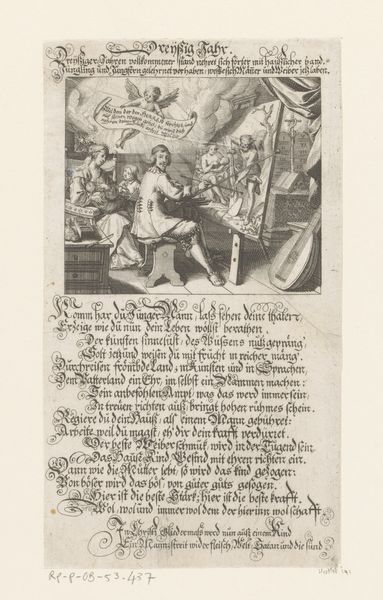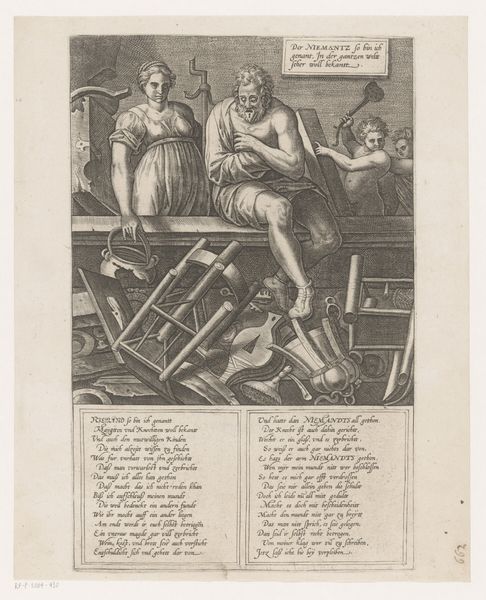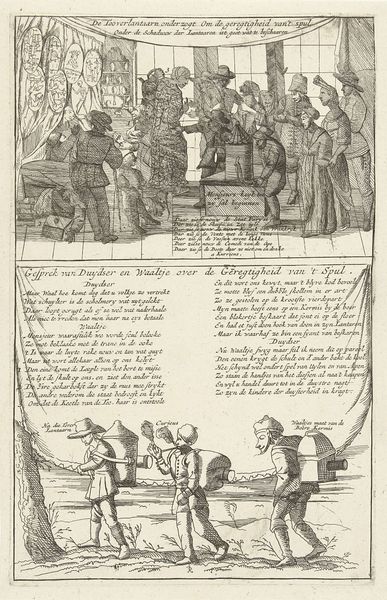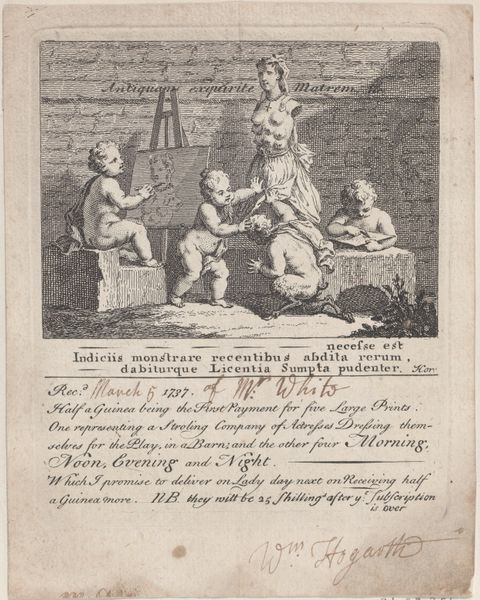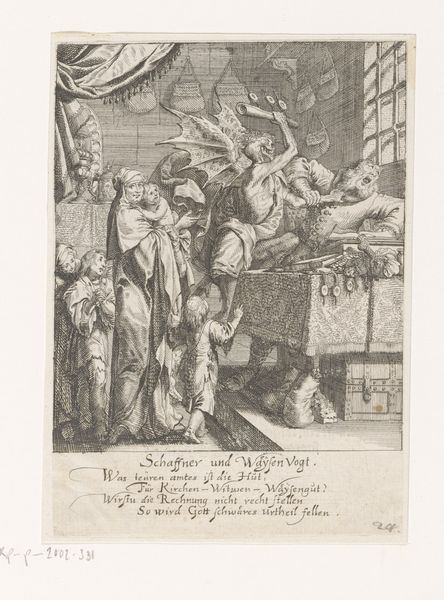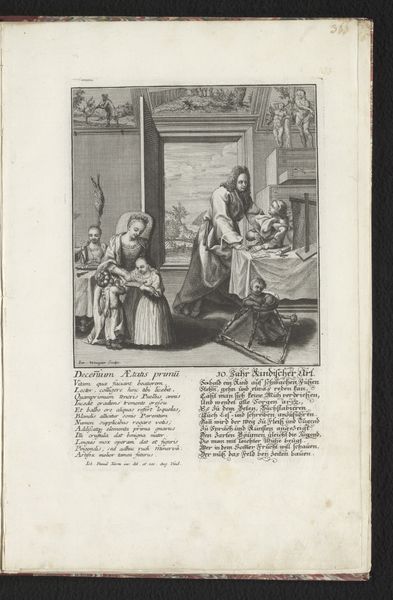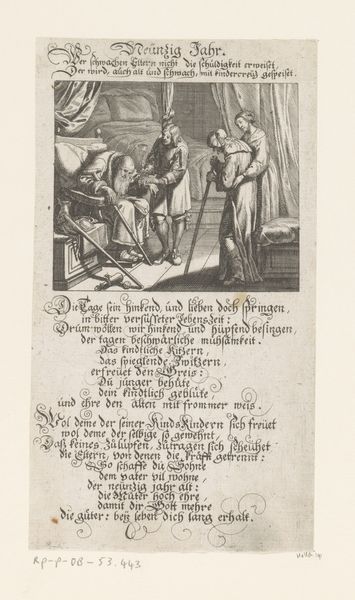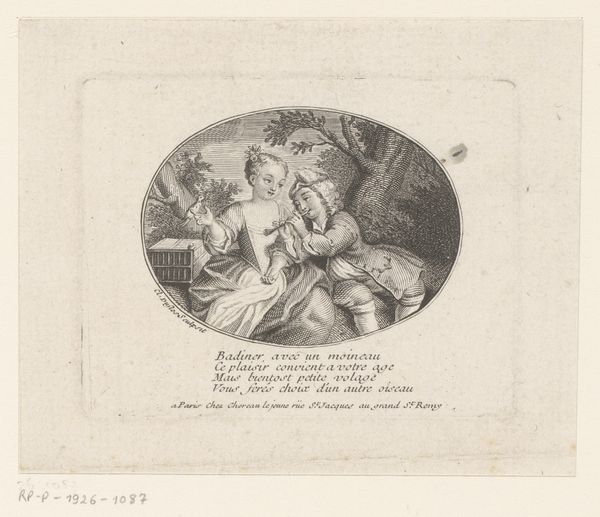
drawing, print, paper, engraving
#
portrait
#
drawing
#
baroque
# print
#
old engraving style
#
paper
#
genre-painting
#
engraving
Dimensions: height 235 mm, width 121 mm
Copyright: Rijks Museum: Open Domain
Curator: I'd like to draw your attention to this print, "Biddend gezin," or "Praying Family," by Conrad Meyer, created around 1675. It resides here in the Rijksmuseum. What’s your initial take? Editor: It strikes me as quite austere. The starkness of the engraving lends a somber air, and the composition, while detailed, seems constrained, focusing heavily on the family within a rigid domestic space. Curator: Meyer presents a fairly complex commentary, I believe, on the era's patriarchal structures and the religious practices intertwined within. The mother and grandmother are relegated to these background roles, while the sons kneel forward in supplication and instruction. There’s a clear power dynamic being visualized, a discourse being perpetuated about the proper alignment of society in relation to God. Editor: I notice how much texture and visual weight are given to the tapestries, compared to the children or even the grandmother, highlighting wealth. I am curious about the physical creation of it. As an engraving on paper, its production and dissemination speak to burgeoning print culture, and who had access to such devotional imagery in the late 17th century, thinking about distribution networks, commercial aspects, and consumption practices surrounding these prints. Curator: Precisely! The work invites a discussion on identity and religious authority, really highlighting how notions of faith and family were visualized and reproduced. But there are elements in the margins that reflect traditions of domestic instruction and devotional instruction. Editor: The very act of producing multiples cheapened labor, it seems. But, this work speaks volumes, doesn't it? Meyer gives us layers of social practice. Curator: I'll concede that, in the final reading, Meyer has indeed furnished insight not only into class and religion, but also onto gender performance as viewed through a modern lens. Editor: Material, dissemination, social consumption -- these pieces construct the real picture for me. Thank you for pointing me to this fascinating piece.
Comments
No comments
Be the first to comment and join the conversation on the ultimate creative platform.
